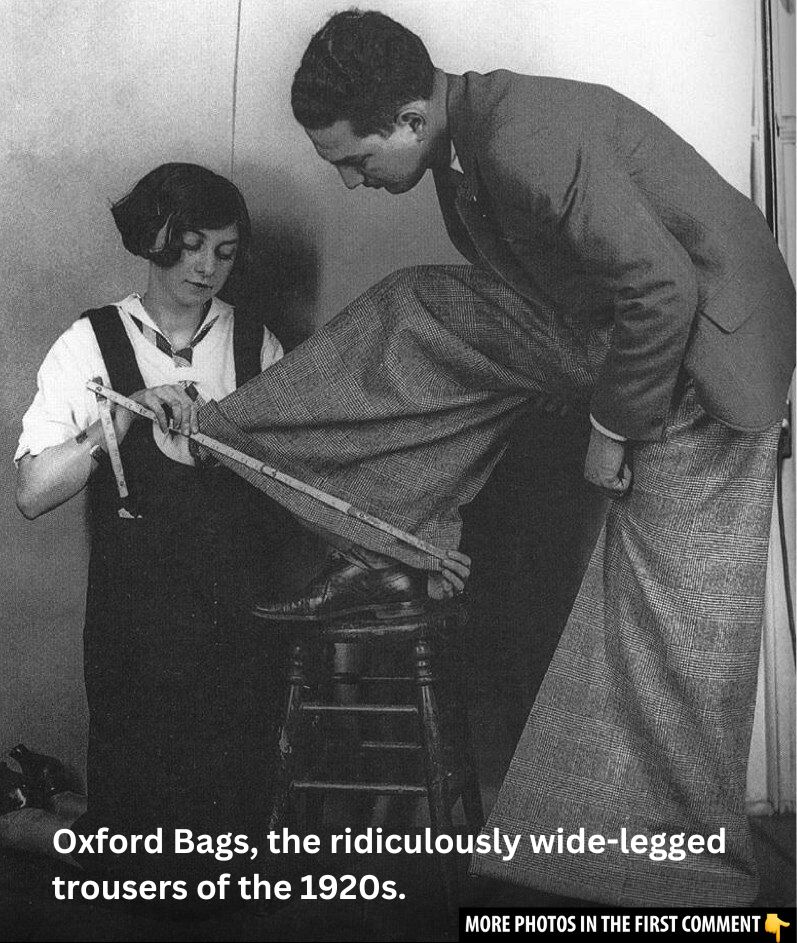In the world of fashion, some trends are unforgettable because of their audacity, and Oxford bags certainly fit that description. These outrageously wide-legged trousers, which made their mark in the 1920s, were a symbol of rebellion and practicality wrapped into one. From university hallways to the streets of major cities, Oxford bags became a unique fashion statement that dared to challenge conventional styles. In a cyclical world of fashion, their outrageous dimensions continue to resurface, proving that what was once “ridiculous” can always make a comeback. Let’s take a deep dive into the origins, rise, fall, and resurgence of these iconic trousers.
What Are Oxford Bags? The Ridiculously Wide-Legged Trousers
Oxford bags were trousers that were so wide at the leg opening, they made today’s “loose fit” pants look tight. Originally crafted from lightweight materials like flannel, these pants were not particularly unusual in terms of construction. They had all the standard features like pockets, a crease down the front, and a cuffed ankle. But the defining characteristic of Oxford bags was their extreme bagginess. The most outrageous versions of these pants could measure up to 44 inches in circumference at the ankle—wide enough to completely hide the wearer’s feet. To put that into perspective, modern-day Levi’s 501 jeans have a leg opening of about 16 inches. Oxford bags were, without a doubt, a fashion statement that reveled in their absurdity.
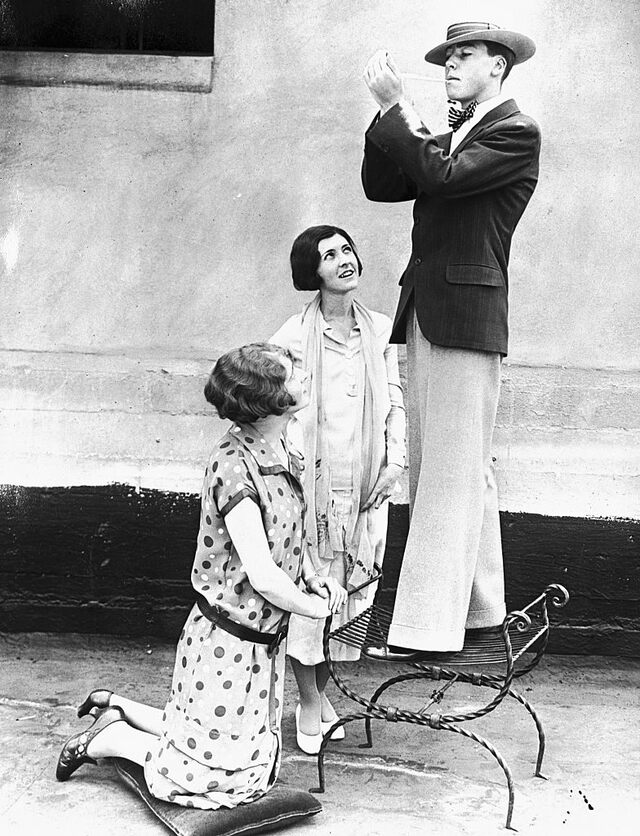
These trousers weren’t just an accident of design—they were born from an undeniable need for comfort and practicality, albeit in a fashion-forward way. So, how did they come to be?
Video
Watch this video to discover the worst men’s fashion fails of the 20th century!
The Origins of Oxford Bags: Rebellion and Practicality
The story behind Oxford bags’ creation is steeped in a mix of rebellion, necessity, and a bit of creative thinking. The most popular theory attributes their creation to the students of Oxford University in 1924. At that time, the university’s administration had banned the wearing of knickerbockers, the baggy, knee-length pants that were a beloved fashion among students. In response to this, Oxford students decided to wear a new style of pants—one so large and flowing that it could cover the hated knickerbockers entirely.
However, some historians, like Sean Longden, have cast doubt on this story. Longden argues that the notion of wearing pants over other pants to avoid detection seems a bit far-fetched. He suggests that the trousers started as something much more practical—serving as an easy-to-wear outer layer for Oxford rowers during chilly mornings. The rowing culture at Oxford was highly influential, and it’s believed that rowers began to wear looser pants to make slipping them on over their rowing shorts easier. This practical, utilitarian origin of Oxford bags would, in turn, catch on as a trend among the general student population.
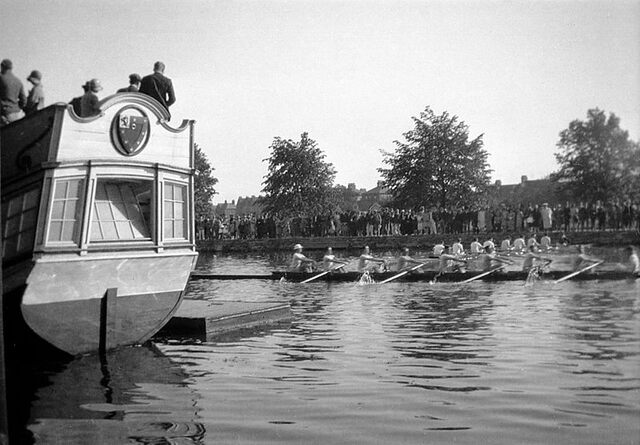
Regardless of their exact beginnings, the evolution of the Oxford bag soon embraced more than just functionality. The trousers became a symbol of style, rebellion, and most importantly, an over-the-top aesthetic. As the trend spread, the leg openings got bigger and bigger until they reached extremes that would later become synonymous with the “ridiculous” fashion trends of the era.
The Popularity Explosion: From Oxford to Global Trend
The appeal of Oxford bags quickly extended beyond the walls of Oxford University. Students and fashion enthusiasts alike adopted the trend, and what started as a university rebellion turned into a global fashion movement. As the Oxford bags made their way from England to the United States, the style evolved slightly. In the U.S., they were rebranded as “collegiate pants” and gained popularity among young people eager to sport the latest fashion.
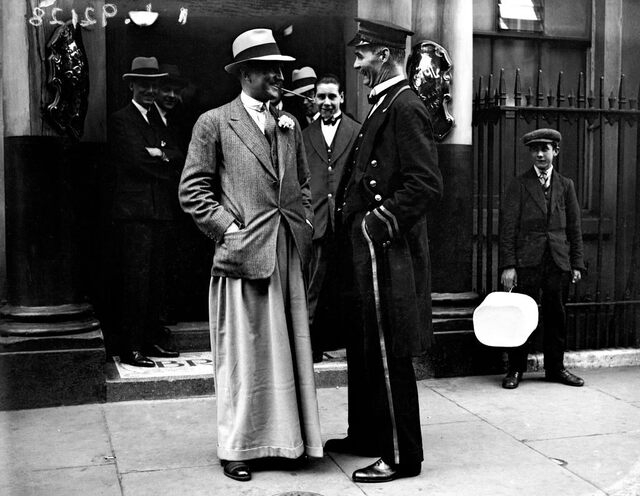
Oxford bags weren’t just worn by students, though. Workmen also embraced the style for its comfort and freedom of movement. They opted for more durable materials like corduroy instead of the lightweight flannel used by students, but the baggy look remained. At the time, these pants were considered the epitome of comfort. Ironically, they also became useful for less reputable reasons. Criminals took advantage of the vast pockets and wide legs to store weapons and other items, inadvertently turning the trousers into a symbol of rebellion beyond the fashion world.
But, as with all extreme trends, the popularity of Oxford bags was short-lived. By the mid-1930s, the exaggerated trousers faded from the spotlight, as slimmer cuts began to dominate fashion once more. Yet, as the saying goes, “what goes out of style eventually comes back in.”
A Second Coming: Oxford Bags and Northern Soul in the 1970s
Fast forward to the 1970s, and the Oxford bags were back in full force—this time embraced by the youth subculture known as Northern Soul. This movement, centered in the northern cities of England, was not about new music but about rediscovering the upbeat, soulful tracks of 1960s America. Northern Soul was just as much about fashion as it was about the music, and Oxford bags made a striking return. The youth in this subculture loved the trousers because they allowed for maximum movement while dancing—particularly when performing spins, kicks, and splits. The loose, flowing fabric of Oxford bags looked incredibly cool during dance routines, further cementing the pants’ cultural significance.
However, the appeal of Oxford bags went beyond just dance floors. The Northern Soul movement was also associated with a certain rebellious edge, especially in its youth-driven attitude toward the establishment. And what better way to emphasize that rebellion than by wearing pants that were bold, oversized, and somewhat impractical?
Oxford Bags in the 1990s: The Hammer Pants and JNCO Resurgence
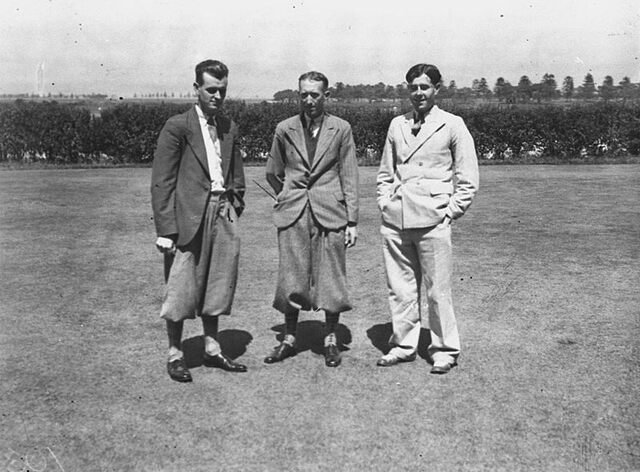
As the 20th century continued, baggy pants found new incarnations in the 1990s. MC Hammer’s signature “Hammer Pants,” made famous by his dance routines, carried forward the legacy of Oxford bags in a more flashy, performance-oriented form. These pants, like the Oxford bags, provided freedom of movement, but they also became a symbol of excess and style. At the same time, JNCO jeans, which featured even wider leg openings than Oxford bags, became a staple among skateboarders and ravers. The oversized look had evolved, but the concept remained the same: bigger was better.
The influence of Oxford bags on these 1990s trends is unmistakable, and the reemergence of these baggy styles once again caught the ire of parents and school administrators. JNCO jeans were particularly controversial, as they were difficult to walk in, but this only seemed to increase their appeal among rebellious subcultures. As with Oxford bags, the pants weren’t just about comfort; they were about making a statement.
The Comeback: Oxford Bags in Modern High Fashion
Now, nearly a century after their inception, Oxford bags are making a quiet but confident return to the fashion world. With the rise of high fashion’s embrace of oversized, dramatic silhouettes, Oxford bags have returned as a symbol of boldness and creativity. Modern versions of these pants retain the wide leg openings, but with a more tailored fit, and are often made with lighter materials that give them an almost ethereal quality.
The resurgence of baggy pants in women’s high fashion is a nod to the legacy of Oxford bags, though today’s wearers may not even realize it. Whether it’s on the runway or the streets, the oversized pants continues to offer comfort and a statement of individuality—just as it did almost a century ago.
Video
Watch this video for the ultimate guide to how pants should fit, featuring men’s dress and suit trousers from Gentleman’s Gazette!
Conclusion: Oxford Bags’ Enduring Legacy in Fashion History
Oxford bags, with their extreme proportions and undeniable flair, may have once been ridiculed as an impractical fad, but their legacy endures. From rebellious university students to Northern Soul dancers and 1990s subcultures, these pants have continually evolved and come back in style. Today, as high fashion embraces oversized silhouettes, Oxford bags stand as a testament to the cyclical nature of fashion, proving that sometimes, the bolder the better. Whether worn for comfort, style, or rebellion, Oxford bags will likely continue to surprise and delight fashion enthusiasts for years to come.
